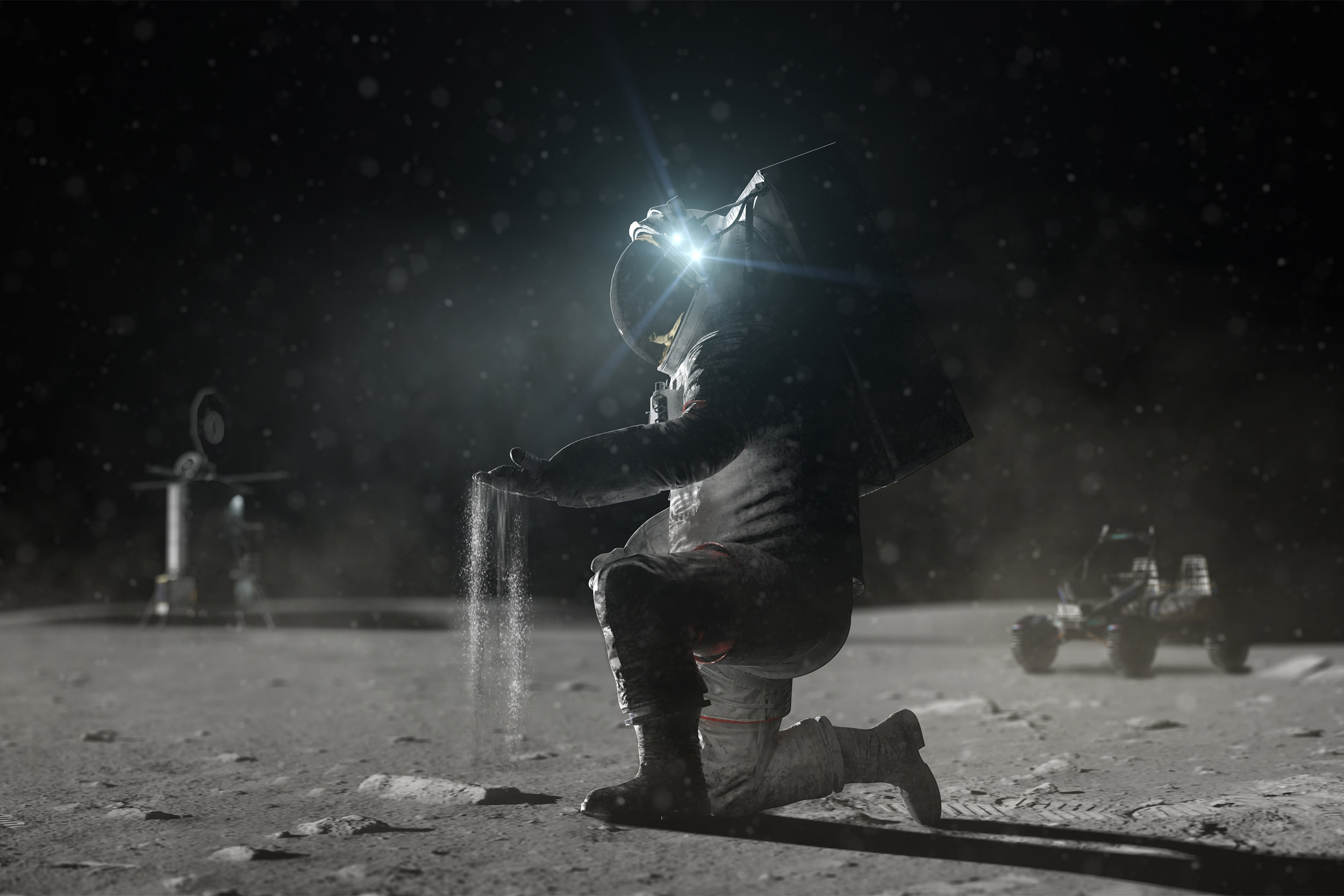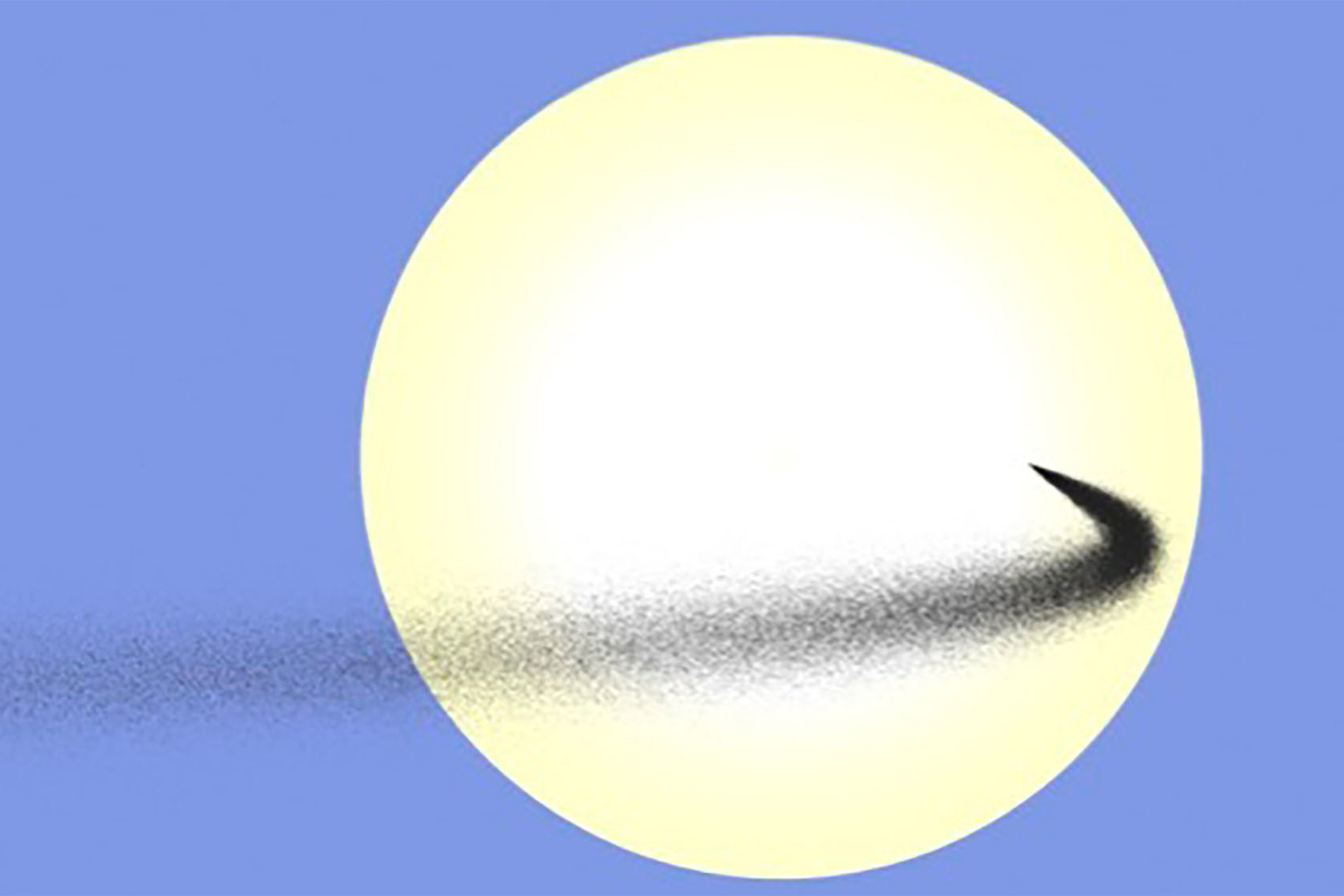Can space dust slow global warming?

Credit: NASA
Scientists believe dust launched from the moon could reduce solar radiation enough to lessen the impact of climate change
Intercepting a fraction of the sun’s energy before it reaches Earth may be enough to reverse the planet’s rising temperatures, say scientists who are looking at dust as a potential shield.
For decades, scientists have considered using screens or other objects to block just enough of the sun’s radiation — between 1 or 2 percent — to mitigate the effects of global warming. In this new study, led by the Center for Astrophysics | Harvard & Smithsonian and the University of Utah, scientists are exploring the potential use of dust to shade the Earth.
The paper, published Wednesday in the journal PLOS Climate, notes launching dust between Earth and the sun to a way station at the “Lagrange Point” would be the most effective, however, it would also be cost prohibitive and labor intensive. As an alternative, the team proposes moondust, arguing that lunar dust launched from the moon could be a low-cost and effective shield.
“It is amazing to contemplate how moondust — which took over 4 billion years to generate — might help slow the rise in the Earth’s temperature, a problem that took us less than 300 years to produce,” says study co-author Scott Kenyon of the Center for Astrophysics.
The team of astronomers applied a technique used to study planet formation around distant stars — their usual research focus — to the lunar dust concept. Planet formation is a messy process that kicks up astronomical dust, which forms rings around host stars. These rings intercept light from the central star and re-radiate it in a way that can be detected.
“That was the seed of the idea; if we took a small amount of material and put it on a special orbit between the Earth and the sun and broke it up, we could block out a lot of sunlight with a little amount of mass,” says Ben Bromley, professor of physics and astronomy at the University of Utah and lead author for the study.

Simulated stream of dust launched between Earth and the sun. This dust cloud is shown as it crosses the disk of the sun, viewed from Earth.
Credit: Ben Bromley/University of Utah
Casting a shadow
According to the team, a sunshield’s overall effectiveness would depend on its ability to sustain an orbit that casts a shadow on Earth. Sameer Khan, Utah undergraduate student and study co-author, led the initial exploration into which orbits could hold dust in position long enough to provide adequate shading.
“Because we know the positions and masses of the major celestial bodies in our solar system, we can simply use the laws of gravity to track the position of a simulated sunshield over time for several different orbits,” says Khan.
Two scenarios were promising. In the first scenario, the authors positioned a space station platform at the L1 Lagrange Point, the closest point between Earth and the sun where the gravitational forces are balanced. Objects at Lagrange Points tend to stay along a path between the two celestial bodies.
In computer simulations, the researchers shot particles from the platform to the L1 orbit, including the position of Earth, the sun, the moon, and other solar system planets, and tracked where the particles scattered. The authors found that when launched precisely, the dust would follow a path between Earth and the sun, effectively creating shade, at least for a while. The dust was easily blown off course by the solar winds, radiation, and gravity within the solar system. The team concludes that any L1 space station platform would need to create an endless supply of new dust batches to blast into orbit every few days after the initial spray dissipates.
“It was rather difficult to get the shield to stay at L1 long enough to cast a meaningful shadow. This shouldn’t come as a surprise, though, since L1 is an unstable equilibrium point,” Khan says. “Even the slightest deviation in the sunshield’s orbit can cause it to rapidly drift out of place, so our simulations had to be extremely precise.”
In the second scenario, the authors shot lunar dust from a platform on the surface of the moon toward the sun. They found that the inherent properties of lunar dust were just right to effectively work as a sunshield. The simulations tested how lunar dust scattered along various courses until they found excellent trajectories aimed toward L1 that served as an effective sunshield.
The results were welcome news, the team says, because much less energy is needed to launch dust from the moon than Earth. This is important because the amount of dust required for a solar shield is large, comparable to the output of a big mining operation here on Earth.
Kenyon says, “It is astounding that the sun, Earth, and moon are in just the right configuration to enable this kind of climate mitigation strategy.”
Just a moonshot?
The authors stress that their new study only explores the potential impact of this strategy, rather than evaluate whether these scenarios are logistically feasible.
“We aren’t experts in climate change, or the rocket science needed to move mass from one place to the other. We’re just exploring different kinds of dust on a variety of orbits to see how effective this approach might be. We do not want to miss a game changer for such a critical problem,” says Bromley.
One of the biggest logistical challenges — replenishing dust streams every few days — also has an advantage. The sun’s radiation naturally disperses the dust particles throughout the solar system, meaning the sunshield is temporary and particles do not fall onto Earth. The authors assure that their approach would not create a permanently cold, uninhabitable planet, as in the science fiction story, “Snowpiercer.”





